It’s not every museum that forgets where its own doors are. Yet this has happened at the Metropolitan Museum of Art at various points in the past. The institution is so big (‘an island city […] operating according to its own necessities’, as Jonathan Lethem observes in his novel Chronic City), and grew so quickly after its founding in 1870, that some of its portals were closed off, and then stayed closed for generations.
It is through one of these rediscovered apertures that one now enters the Met’s new galleries for British Decorative Arts and Design. The completion of the project is a banner event in this, the museum’s 150th anniversary year. One can only imagine how delighted the curators were when the old door was discovered. Previously, this suite of rooms lacked a prominent entrance. Now, if you walk in from Fifth Avenue and take a right out of the Medieval Sculpture Hall, you’ll find yourself face to face with 16th-century England.
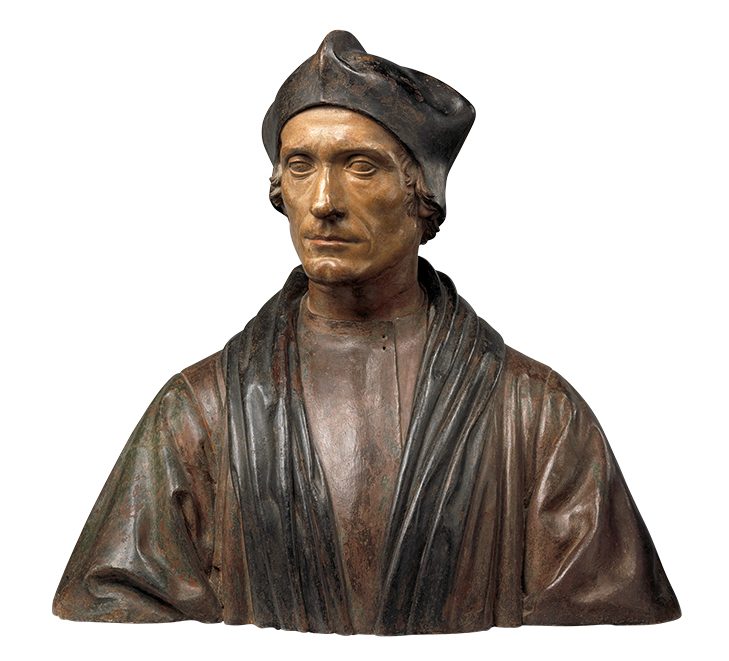
Bishop John Fisher (1510–15), Pietro Torrigiano. Metropolitan Museum of Art, New York.
More specifically, you’ll be facing the English bishop John Fisher, as portrayed in polychromed terracotta by the Italian sculptor Pietro Torrigiano (1472–1528). Though Torrigiano is most famous for breaking Michelangelo’s nose – in a fit of artistic jealousy, according to Vasari – he now has another distinction. Bust portraits by the artist open both the Met’s installation and its transatlantic sibling, the British Galleries at the Victoria and Albert Museum. (The date range of the two projects, 1500–1900, is the same, though the V&A’s galleries are significantly larger.) In London, it is Torrigiano’s portrait of Henry VII that welcomes the viewer; it is from the same set as the Fisher bust (the set includes a third portrait, of an unknown Italian merchant, also in the Met’s collection). In both cases, the curators deploy Torrigiano to make the same point: from the Renaissance onwards, British art and design took shape primarily in response to immigrants and imports.
The Met could not have foreseen, when it began its renovation six years ago, that it would be completed just as Brexit ends Britain’s membership of the EU. The United Kingdom is now heading into its own uncertain future; but its past was undeniably cosmopolitan. That is one of the key themes explored in the Met’s new galleries, along with other issues chosen for their current relevance, such as technology and entrepreneurship. The curators, aware that British decorative art may seem recondite to the average viewer, have tried where possible to sound a note of contemporaneity. The wall texts are even written in the present tense, like the opening credits for a Star Wars movie: ‘The Tudors’ rule ends, and the Stuarts take the throne…’
This attempt to make old things relatable comes as no surprise. It has been a dominant museological tendency for about two decades (the V&A’s British Galleries, which opened in 2001, led the way in this regard). What makes the Met’s project particularly exciting, though, is the way in which context and connoisseurship are held in equilibrium. Attention is paid to social issues, but not at the expense of the aesthetic specificity of the objects. This balancing act is all the more impressive given the huge miscellany of things on display – furniture, ceramics, metalwork, textiles (including costume), architectural elements and whole interiors. Each is given bespoke treatment.
The project has, of course, been the work of many hands. Initially, it was headed by Luke Syson and Ellenor Alcorn. When those two talented curators moved on (to the Fitzwilliam Museum and the Art Institute of Chicago, respectively), the Met was fortunate to find excellent candidates to step into their shoes – Sarah Lawrence, of the museum’s European Sculpture and Decorative Art department, and Wolf Burchard, formerly of the National Trust in the UK, as head of the project. The completed galleries largely fulfil Syson and Alcorn’s vision, with a few important enhancements. Burchard has brought in more paintings, particularly portraits – ‘so visitors know what these people looked like’, as he puts it – and the team has also continued to make strategic acquisitions. Fully one quarter of the objects on view here were purchased with the project in mind, particularly to fill out the previously weak 19th-century collections; earlier generations of donors tended to turn their noses up at Victoriana. Even as they corrected for such omissions, Alcorn says, the team embraced the viewpoint of previous generations of curators and collectors: ‘We wanted to be clear that we were building a narrative from the point of view of a former colony, and it was the resonance with New York City’s own identity (entrepreneurialism, luxury goods, retail, competition) that emerged as the main theme.’
The designers of the new galleries are Robin Standefer and Stephen Alesch, principals of Roman and Williams – a firm well-known for its residential interiors, hotels, and shops, but without any previous museum experience. Appointing them was a bold decision on the Met’s part, and it has paid off handsomely. The galleries have just the right amount of theatricality, with well-judged variations from one century to the next, moderated by strong elements of continuity, including the prominent use of powder-coated steel fittings that look like bronze, and lend a burnished gravitas to the proceedings.
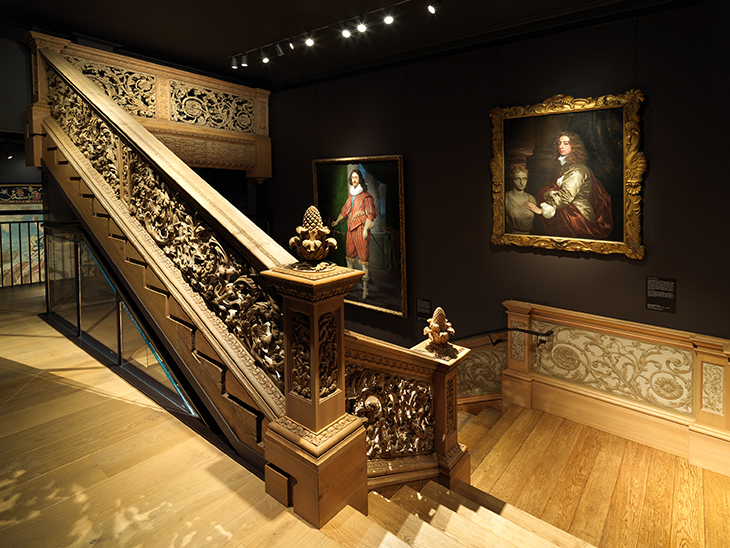
The Cassiobury staircase in the 17th-century gallery. Photo: Joseph Cascia/Metropolitan Museum of Art
One of the most breathtaking moments comes early on, with a space built around the great carved stair from Cassiobury Park, Hertfordshire, c. 1677–80. Attributed to the English-born carver Edward Pearce, it bears the evident influence of Grinling Gibbons’s florid yet muscular baroque style. This architectural fragment was acquired by the museum in 1932, but this is the first time that visitors are able to ascend its steps, gaining a commanding view down on to a gallery full of tapestries and other objects – evoking, to some extent, the experience of actually standing atop a grand stairway in a country house. Elements that might have been damaged by this foot-traffic have been replaced with replicas by the skilled French woodcarver Carole Hallé. Standefer and Alesch have also cunningly used the staircase’s geometry to create a set of upstairs-downstairs ‘pocket galleries’, showing off ceramics, silver, textiles and the like. This deft move perhaps reflects the designers’ unorthodox background: the dramatic shift in scale is like something from a theatre set, or even a nightclub.
It’s in the next set of spaces, the ones devoted to the 18th century, however, that the full glories of the Met’s collection of British decorative arts are unveiled. The museum and its supporters have had their sights firmly trained on the Georgian era for well over a century now, viewing it as the epitome of elegant living. Certainly this was the case with Judge Irwin Untermyer, one of the Met’s most significant benefactors (he even merits a mention in E.L. Konigsburg’s beloved children’s book From the Mixed-Up Files of Mrs. Basil E. Frankweiler, as the kids staying overnight in the Met’s galleries tuck themselves into a bed from his collection). Untermyer’s interests were concentrated in the period from the 16th to the 18th centuries, and he was particularly knowledgeable about English silver. Eventually he gave about 2,000 objects to the Met, not a few of them on view here.
As any museum curator (or visitor!) knows, such profusion can be its own problem. Here, variations in pacing and presentation should help to fend off fatigue. There are moments of great artefactual density, as with a display case devoted to the rapid growth of the 18th-century retail economy. It’s a triumph of the mount-maker’s art: hundreds of small objects, from miniature tea-sets to the contents of an etui, each item perfectly cradled in its own custom-crafted holder. At the other end of the spectrum are the Met’s three great British period interiors – the dining room from Kirtlington Park in Oxfordshire (1748), with its glorious neoclassical plasterwork; the tapestry room from Croome Court, Worcestershire (1763–71); and Robert Adam’s dining room from Lansdowne House in London (1766–69). All are shown without the quasi-fictional furnishing schemes that they once had. ‘One of the conceptual principles of the British Galleries is that every element on view is presented to the audience as an individual art object,’ Sarah Lawrence explains, ‘so there is nowhere to be seen a suggestion of a vignette. The architectural shell – walls, ceilings, floor – constitutes the artwork on view.’ This said, additional ambience is lent to the interiors by the recreation of a historic view of gardens and landscape, visible through their window as in a theatre or film set. For Lawrence, these scenes, executed by James Boyd of the New York firm Boyd Reath, create ‘not so much a contradiction as an affecting tension for the visitor. The room is the authentic thing, yet experienced by the visitor as if entering into that space at a particular time of day and season.’
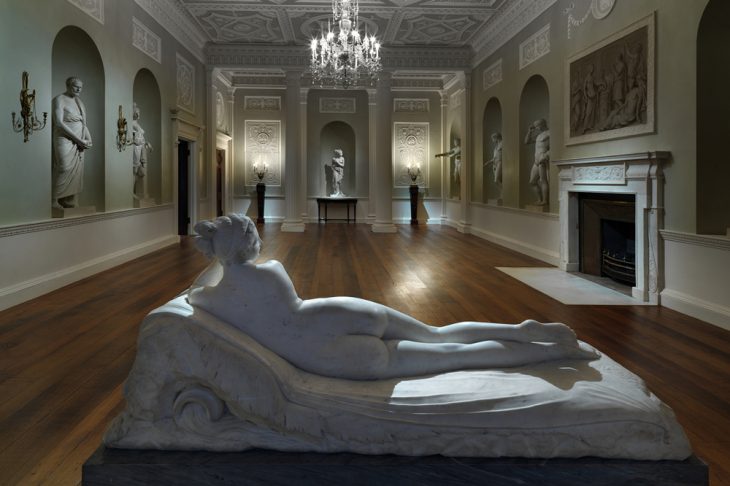
Dining room from Lansdowne House (1766–69), after a design by Robert Adam. Metropolitan Museum of Art
As is the case at many museums, the Metropolitan’s collections skew up-market, with comparatively little representation of the belongings of the ‘lower sorts’, or of non-white makers and owners. Yet, like their colleagues in the American Wing – who have finally introduced indigenous objects to their displays, thanks to a large gift from Charles and Valerie Diker – the curators of the British Galleries have made efforts to broaden the narrative, drawing viewers’ attention to hierarchies of class and race. One simple but effective manoeuvre is the frequent mixing together of luxurious materials with inexpensive ones – silver and porcelain alongside pewter and earthenware.
Far more difficult to cope with, curatorially speaking, is the reality of Britain’s imperial domination of the globe during the 18th and 19th centuries. This includes, of course, the nation’s longstanding involvement in the slave trade. Viewed through this particular historical lens, the objects in the Met can look like the hood ornaments of a capitalist death machine. (Consider that the British East India Company was at least partly culpable for the Bengal Famine of 1770, which resulted in the deaths of ten million people.) Luke Syson, who approaches Instagram in an unusually bellettristic fashion, raised the difficult topic of imperialism in a post concerning a bust of Queen Victoria, sculpted by Alfred Gilbert in 1887. Syson had attempted to acquire the work from the UK when he was at the Met, but it had an export bar placed on it. He was reunited with the sculpture when he became director of the Fitzwilliam, which had subsequently acquired the bust. Though Syson’s interest in the work had been partly aesthetic – ‘the way [Gilbert] used the avalanche of lace and string of strong crisp pearls to set off the Queen’s steam pudding flesh is dazzling’ – he had also been interested in its political implications. ‘How might she have spoken in New York? Would she have documented a chapter of British art history that is almost unknown abroad, or stood for a period of imperial history about which we – rightly – feel increasingly ashamed and of which many in the US are extremely critical? Both, I suppose.’
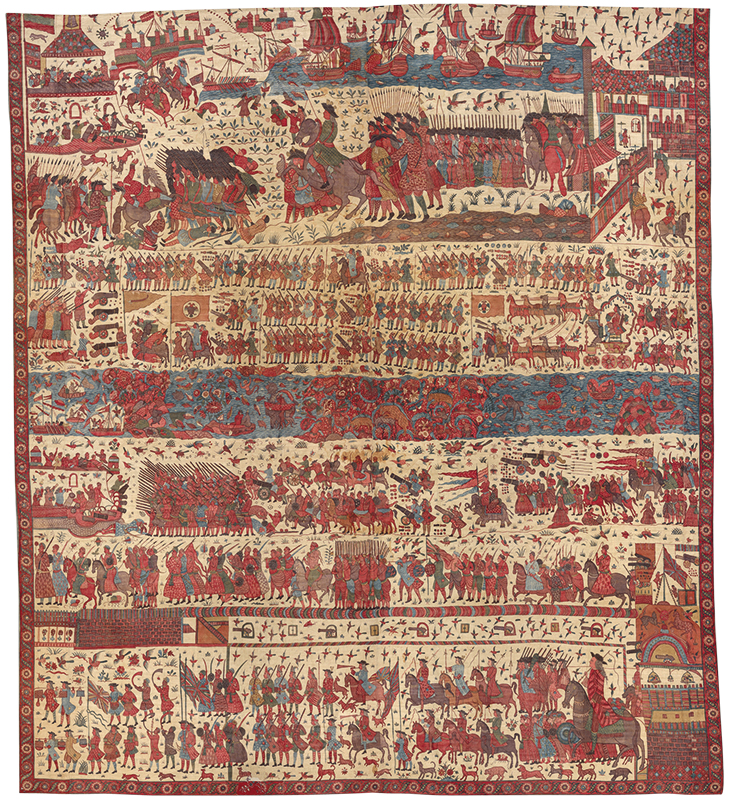
Hanging depicting a European conflict in south India (before 1763). Metropolitan Museum of Art
It is obviously difficult for curators to grapple with difficult histories, particularly when they are primarily working with elite domestic furnishings. There are, however, moments at the Met in which the more violent aspects of the British experience are illuminated. One of the most impressive new acquisitions made for the galleries is a painted chintz of 1763 or earlier, showing a complex battle scene – perhaps the siege of Pondicherry of 1760–61, a major milestone in Britain’s successful expulsion of its chief rival, the French, from the subcontinent. Essentially a history painting wrought with mordant and dye, it shows the complex webs of allegiance that allowed the British to gain supremacy in the region, with identifiable Muslim and Hindu soldiers fighting under European banners.
Similarly, slavery is addressed through the inclusion of objects like Wedgwood’s famous abolitionist badge demanding ‘Am I Not a Man and a Brother?’, first made in around 1787, and accompanying texts, such as Olaudah Equiano’s autobiographical narrative of slavery and eventual freedom. The curators have chosen a passage in which Equiano describes his first view of the slave ship that would bring him across the Atlantic: it ‘filled me with astonishment, which was soon converted into terror, which I am yet at a loss to describe’. Visitors may make the connection between Equiano’s words and a nearby sugar-box by the silversmith Paul de Lamerie (hallmarked 1744/45), which shows enslaved labourers harvesting cane. The scene was intended as divertingly exotic at the time, but of course it looks very different today, a grotesque collision of elegance and exploitation.
When visitors arrive in the 19th-century section of the new galleries – via an impressive grand archway, which was also unveiled in the course of the renovations – they may be even more inclined to wonder whether decorative art can tell the British story. The Victorian era was of course the age of machinery, railways, and photography. But while those modern technologies were certainly crucial to design history (mass manufacturing, distribution, and marketing were dependent upon them), they do not much register in the appearance of the era’s decorative arts, which instead looked backwards. The curators approach this problem head-on, framing Victorian design as a ‘free-for-all’ in response to the Industrial Revolution. As one might expect, emphasis is placed on the few pioneers who sought to define a modern aesthetic, notably Christopher Dresser. Thanks mainly to assistance from the New York couple Larry and Janet Larose, who have a comprehensive collection of the designer’s work, the Met has assembled a handsome wall-case showing Dresser’s work in numerous media, including glass, ceramic, and metalwork.
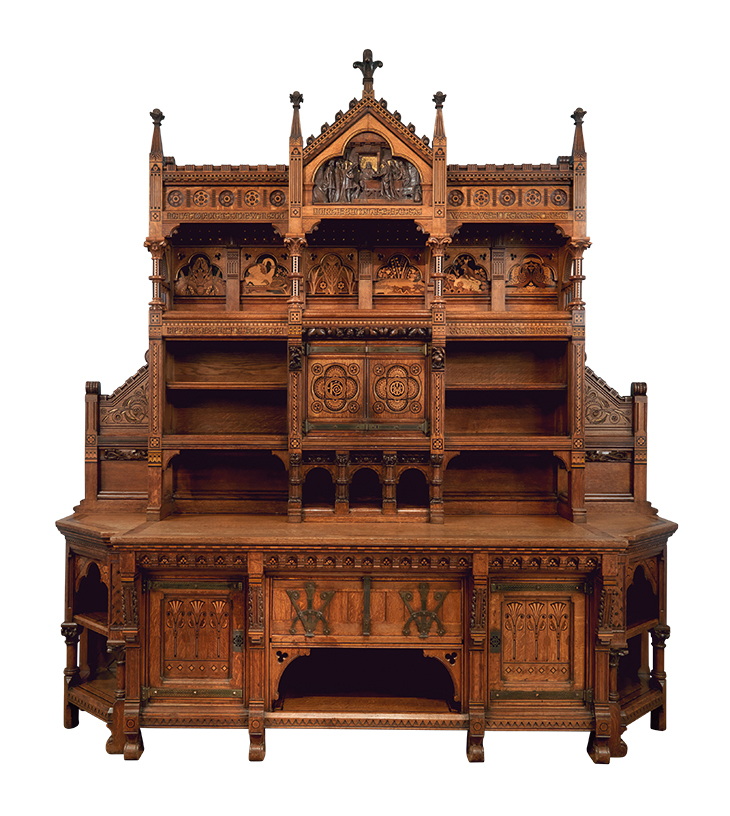
‘Pericles dressoir’ (1866), designed by Bruce J. Talbot and manufactured by Holland & Sons. Metropolitan Museum of Art, New York
Yet the contrary impulse, to make the home into a shelter from modernity, is far more prevalent in the galleries – notably in the overwhelming form of the ‘Pericles dressoir’, designed by Bruce J. Talbert and executed by the prominent London manufacturer Holland & Sons. First presented at the Paris International Exposition of 1867, where it won a silver medal, this awesome pile of cabinetwork, standing over ten feet tall, is a nationalist fanfare from top to bottom, from its Gothic Revival style to its inclusion of a scene and quotations from Shakespeare to the native oak from which it is made. It is the most important of several 19th-century acquisitions made by the Met from the outstanding private collection of John Scott, sold through the Fine Art Society in 2015. (Scott, who said that the piece was ‘as magnificent a piece of furniture as one could hope for’, was additionally delighted that the artists Gilbert & George had been the under-bidders when he acquired it at auction.) To be sure, the curators have also included less triumphalist variants of historicism, including examples by William Morris and other exponents of the Arts and Crafts movement. Even so, the galleries can be said to conclude in a glorious orgy of retrospection. It is a satisfying finale, if only in the sense that it brings the story full circle. The galleries begin with departures from the medieval; they end with a self-conscious return to those now-idealised origins.
In this regard, the opening of the galleries, in the wake of an unresolved conflict over British identity, could not be better timed. Those who admire the nation as a bastion of tradition will, perhaps, admire the pageant of Victorian nostalgia on display. Those who are exasperated with British insularity may rush out to look for the galvanic charge of modernism, elsewhere in the Met’s halls. Either way, they may find new ways to ponder the deep roots of the current debate. After all, lost doorways aside, not forgetting is what the Met is all about.
The British Galleries at the Metropolitan Museum are now open.
From the March 2020 issue of Apollo. Preview and subscribe here.
Unlimited access from just $16 every 3 months
Subscribe to get unlimited and exclusive access to the top art stories, interviews and exhibition reviews.

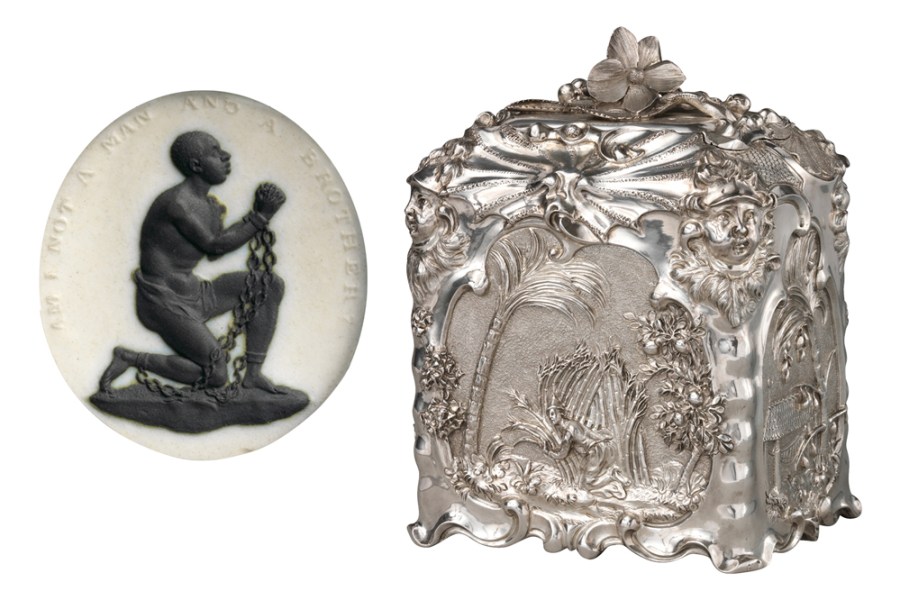
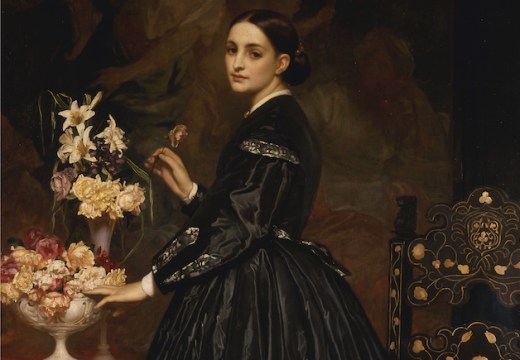
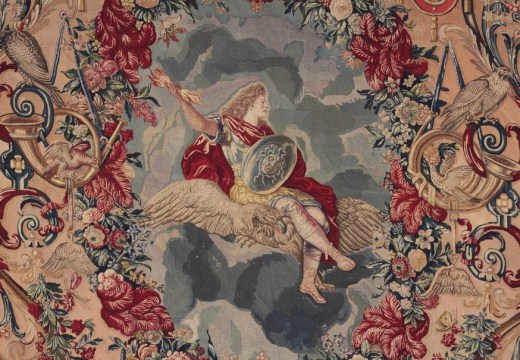
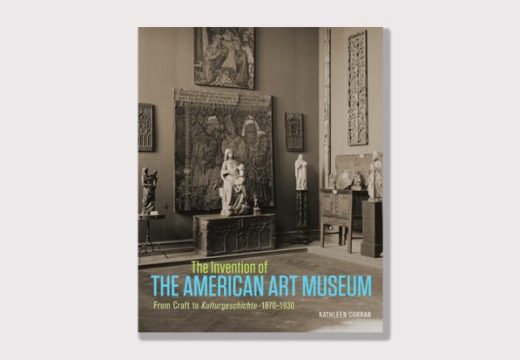









![Masterpiece [Re]discovery 2022. Photo: Ben Fisher Photography, courtesy of Masterpiece London](http://www.apollo-magazine.com/wp-content/uploads/2022/07/MPL2022_4263.jpg)
It’s time for the government of London to return to its rightful home